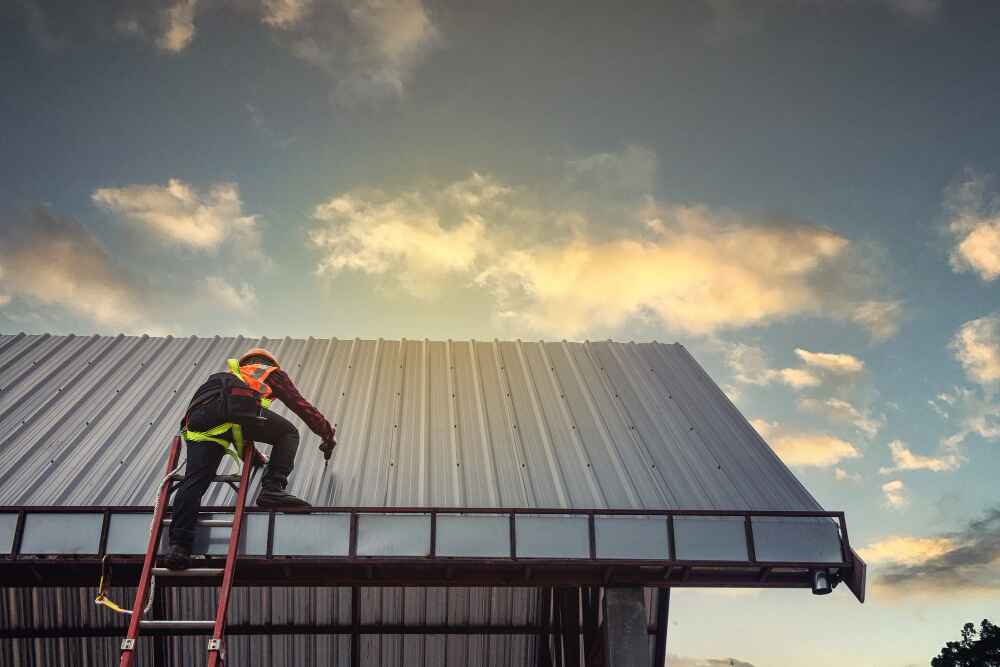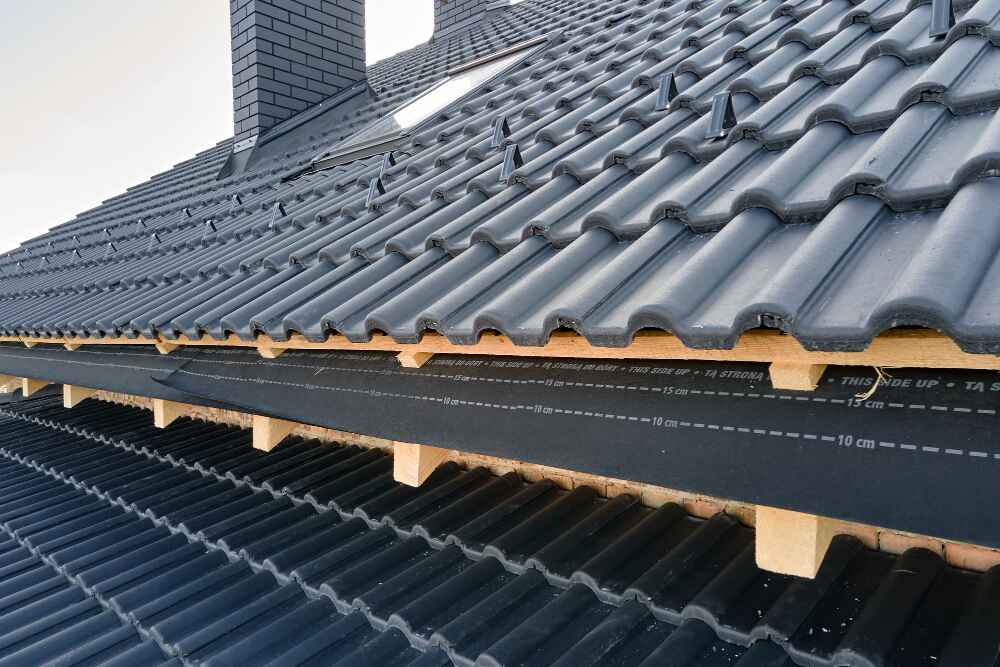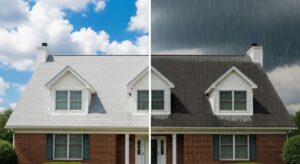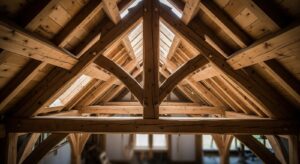Keeping your roof in top shape isn’t just about fixing leaks after a storm — it’s about investing in long-term protection, value, and peace of mind. Whether you’re a new homeowner or a seasoned DIYer, understanding the different types of roofing materials maintenance can save you thousands in roof maintenance and repair costs over time. This comprehensive pillar page serves as your go-to guide for maintaining a roof and extending its life, offering practical roofing tips and in-depth explorations of every common roofing material.
Types of Roofing Materials Maintenance Every Homeowner Should Know
Different roofing materials require different maintenance techniques. Whether you have asphalt shingles, metal panels, or rubber roofing, understanding the unique care needs of each type can help extend their lifespan and reduce long-term repair costs.
- Roof preservation
- Metal roof maintenance
- How do you clean a shingle roof
- Cement tile roof cleaning
- RV rubber roof maintenance
- Rubber roof maintenance
- Concrete tile roof maintenance
- Slate repair
- Roof cleaning chemicals
- Best roof shingles
- Wood shake roof
Why Roof Maintenance Matters
Homeowners often forget about their roofs until a problem arises. But regular roof maintenance is key to preventing small issues from becoming major headaches. Cracked shingles, clogged gutters, and moss buildup can lead to leaks, rot, and even structural damage.
Benefits of Roof Maintenance:
- Increases the lifespan of your roof
- Prevents expensive emergency repairs
- Improves home energy efficiency
- Maintains curb appeal and property value
- Supports insurance claims through documentation
- Helps identify signs of aging early
When you understand roof maintenance and repair, you take proactive control over one of your home’s most critical assets.
If you want to master home roof maintenance, let’s start with the foundation: roof preservation.
1. Roof Preservation: The Foundation of a Long-Lasting Roof
Roof preservation is a strategic approach to protecting your roof from age, weather, and wear. It involves scheduled inspections, routine cleaning, protective coatings, and proactive fixes to small issues before they grow. Inspect fasteners, seams, and flashing for rust or loosening. Learn more about flashing maintenance to prevent water infiltration and structural damage.
Roof Preservation Tips:
- Inspect twice a year (spring and fall)
- Remove debris like leaves, twigs, and branches
- Clean moss and algae buildup to prevent water retention
- Trim overhanging trees to reduce shade and leaf litter
- Apply protective coatings or sealants to resist UV and moisture damage
Preservation reduces the long-term cost of ownership and maximizes the roof’s life expectancy. It applies to all roofing materials—metal, tile, shingle, or flat.
Best Practices:
- Use binoculars or drones for safe roof inspections
- Keep gutters and downspouts clean to avoid water backup
- Document any changes with photos to monitor degradation over time
Related: Read our full guide on Roof Preservation →
2. Metal Roof Maintenance: Sleek, Strong & Still Needs TLC

Metal roofs are celebrated for their sleek appearance and resistance to extreme weather. Still, they benefit greatly from consistent metal roof maintenance routines.
How to Maintain a Metal Roof:
- Check fasteners, seams, and flashing for rust or loosening
- Clean annually with a gentle detergent to remove dirt and pollutants
- Inspect roof coatings and recoat as needed to prevent corrosion
- Monitor for scratches that expose bare metal
- Check panels for warping or expansion due to thermal movement
Common Metal Roofing Issues:
- Rust at seams or screws
- Expansion gaps at flashing
- Fading or chalking of the coating
- Ice dams on valleys and eaves
Quick Tip:
Use a roof-safe ladder and avoid walking on metal surfaces without rubber-soled shoes or foam pads.
Related: See our Metal Roof Maintenance Guide →
3. How Do You Clean a Shingle Roof? A Gentle Touch Is Key
Asphalt shingles are durable, affordable, and versatile—but they can attract algae, moss, and mold in damp climates. Knowing how to maintain a shingle roof without damaging it is essential.
Step-by-Step: How to Clean a Shingle Roof
- Use a low-pressure garden hose — never power wash asphalt shingles.
- Apply a 50/50 mix of bleach and water or a store-bought roof cleaner.
- Let the solution sit for 15–20 minutes to break down moss and algae.
- Rinse gently with water starting from the top.
- Install zinc or copper strips near the peak to inhibit future growth.
Shingle Roof Maintenance Tips:
- Replace cracked, curled, or missing shingles promptly
- Ensure flashing is secure around chimneys and vents
- Keep soffit vents and attic insulation in good shape
- Monitor granule loss in gutters
Related: Shingle Roof Maintenance Guide →
4. Cement Tile Roof Cleaning: Tough but Needs Care
Cement tiles are highly durable and offer a beautiful aesthetic, but they’re prone to moss growth and surface wear. Cleaning and sealing are part of cement tile roof maintenance that you shouldn’t skip.
Cleaning Tips for Cement Tile Roofs:
- Use a low-pressure washer with a fan tip nozzle
- Apply a pH-neutral, non-corrosive cleaning agent
- Rinse carefully to avoid driving water underneath tiles
- Inspect flashing and underlayment after cleaning
Sealant Application Tips:
- Choose breathable, water-repellent coatings
- Apply only when the roof is completely dry
- Reapply sealants every 3–5 years, depending on the climate
Caution: Never use acidic or abrasive chemicals, as they can degrade the surface.
Related: Cement Tile Roof Cleaning Tips →
5. RV Rubber Roof Maintenance: Protect Your Mobile Home
If you own an RV, its rubber roof is as important as the engine. EPDM and TPO materials dominate the RV roofing scene, and both need specific care.
Essential Maintenance Steps:
- Clean monthly using RV roof cleaners designed for rubber
- Apply UV-protective conditioners to prevent drying and cracking
- Inspect lap sealant and reseal as needed (especially around skylights and A/C units)
- Park in shaded or covered areas to minimize sun exposure
Signs of Damage:
- Bubbles or blisters under the surface
- Tears or splits at seams
- Yellowing or chalking of the membrane
Don’t forget: Clean RV roofs before and after long trips, and check the interior ceiling for water stains.
Related: RV Rubber Roof Maintenance Guide →
6. Rubber Roof Maintenance: Low Slope, High Responsibility

EPDM and TPO rubber roofs aren’t just for RVs—they’re common on flat or low-slope residential homes and commercial buildings. Maintenance here can prevent costly interior damage.
Rubber Roof Care Tips:
- Remove debris after storms or high winds
- Patch small holes or punctures with rubber-compatible sealants
- Recoat roof with liquid EPDM every 5–10 years
- Ensure proper drainage with clear scuppers and internal drains
Preventative Rubber Roof Maintenance Includes:
- Checking HVAC unit mounts for stress points
- Watching for ponding water (a sign of poor drainage)
- Reinforcing seams with seam tape or adhesives
Related: Rubber Roof Maintenance Checklist →
7. Concrete Tile Roof Maintenance: Similar to Cement, Slightly Different
Concrete tiles mimic clay and cement aesthetics but come with their own challenges. Because they’re often color-integrated, maintaining surface appearance is key.
How to Maintain Concrete Tile Roofs:
- Perform quarterly inspections, especially after storms
- Use air blowers to remove leaves and debris
- Clean moss with biodegradable solutions
- Reapply paint or stains if the finish fades
Special Considerations:
- Broken tiles must be replaced carefully to avoid damage
- The underlayment (often waterproof felt) wears faster than tiles
Tip: Keep foot traffic to a minimum, or walk using foam pads to distribute weight.
Related: Concrete Tile Roof Maintenance Tips →
8. Slate Repair: Classic Beauty, Fragile by Nature
Slate is the aristocrat of roofing materials. It can last a century or more, but its brittleness makes maintenance delicate.
Slate Roof Repair Tips:
- Inspect for missing or cracked tiles every 6 months
- Replace damaged slates using copper or stainless steel nails
- Avoid standard roofing nails that can cause splits
- Use ladders with roof jacks or walkboards to avoid cracking tiles
Key Signs of Slate Roof Damage:
- Discolored underlayment
- Water stains in the attic or top-floor ceilings
- Exposed fasteners (should never be visible)
Related: Slate Roof Repair Guide →
9. Roof Cleaning Chemicals: What Works Without Harm
Using the wrong chemicals can ruin your roof or poison your garden. Use only roof-safe, material-specific cleaners.
Safe Roof Cleaning Chemicals by Material:
- Asphalt Shingles: Sodium hypochlorite + surfactant
- Metal Roofs: Non-abrasive pH-neutral detergents
- Tile Roofs: Biodegradable, non-acidic moss removers
- Slate/Wood: Oxygen bleach (sodium percarbonate)
Avoid:
- Ammonia (reacts with bleach)
- Chlorine-based cleaners on metal or wood
- Pressure washing with caustic agents
Pro Tip: Rinse thoroughly to prevent cleaner runoff from damaging landscaping.
Related: Guide to Roof Cleaning Chemicals →
10. Best Roof Shingles: What to Choose for Your Climate
Choosing the right shingles is the first step in reducing your roof maintenance needs. The best shingles often include algae resistance and wind warranties. To explore how long each roofing type lasts, see this guide on roof lifespan by material.
Top Roof Shingles to Consider:
- Architectural Asphalt Shingles: Affordable, layered look, moderate durability
- Luxury Asphalt Shingles: Heavier, enhanced style, 40+ year lifespan
- Impact-Resistant Shingles: Class 4 hail rating, perfect for storm-prone areas
- Solar Shingles: New technology, cost-effective energy source
- Cool Roof Shingles: Reduce heat absorption, perfect for hot states
Shingle Warranty Tip: Check both material and installation warranties. The best shingles often include algae resistance and wind warranties.
Related: Compare the Best Roof Shingles →
11. Wood Shake Roof: Rustic Charm, Extra Care
Wood shakes bring warmth and natural beauty, but they demand the most consistent care of any roofing type.
Maintenance Tips for Wood Shake Roofs:
- Clean monthly to prevent moss buildup
- Use fire-retardant treatments in wildfire-prone regions
- Treat with preservatives to repel insects and fungi
- Re-oil with natural oils every 2–4 years
Extra Wood Shake Maintenance Tips:
- Ensure attic ventilation to prevent internal condensation
- Replace damaged shakes using copper fasteners
- Avoid pressure washing, which erodes fibers
Related: Wood Shake Roof Maintenance Guide →
Final Roofing Tips: Consistency is Key
No matter your roof type, consistent maintenance saves money and protects your home. Whether it’s asphalt roof maintenance or roofing maintenance for aging roofs, the principles remain the same: inspect, clean, protect. These essential steps help reduce the risk of leaks and expensive repairs. Check out more roofing maintenance tips from trusted experts.
Top 7 Roof Maintenance Tips for Every Homeowner:
- Schedule inspections twice a year (spring and fall)
- Clear gutters and downspouts
- Address moss, algae, and debris promptly
- Seal or coat surfaces as needed
- Reapply underlayment and flashing when required
- Document all repairs and cleanings
- Hire professionals for major inspections
Conclusion: Ready to Level Up Your Roof Maintenance Game?
Investing in residential roof maintenance is one of the smartest homeownership decisions you can make. This guide gave you everything you need to get started with roof maintenance and repair, from shingle roof maintenance to slate repair.
Explore each subpage and customize your routine based on the material of your roof. The more attention you give it today, the fewer surprises tomorrow.
Need a professional inspection or quote? Contact Pro Roofing Tips today and protect your investment the smart way.






